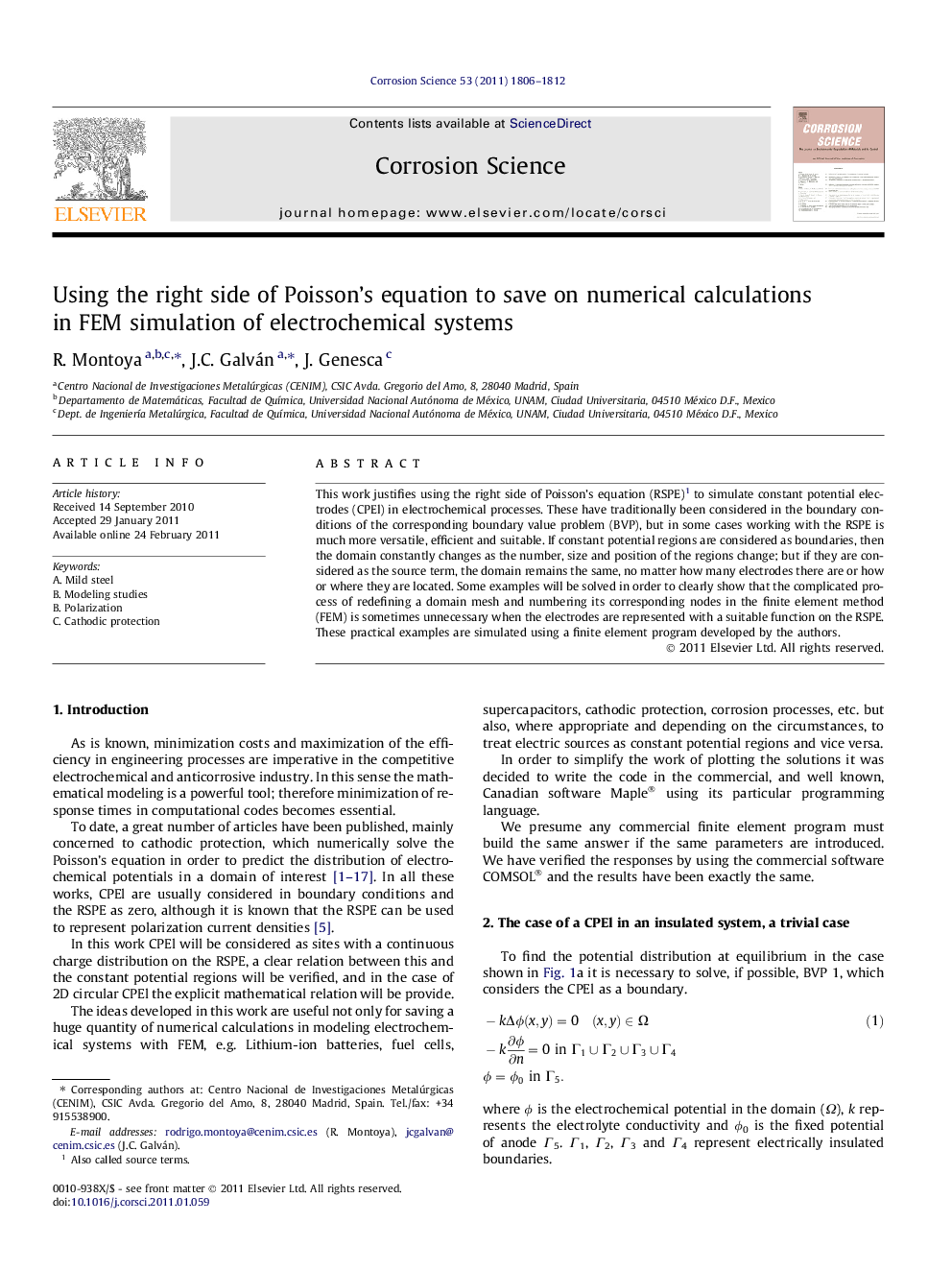| Article ID | Journal | Published Year | Pages | File Type |
|---|---|---|---|---|
| 1470349 | Corrosion Science | 2011 | 7 Pages |
This work justifies using the right side of Poisson’s equation (RSPE)1 to simulate constant potential electrodes (CPEl) in electrochemical processes. These have traditionally been considered in the boundary conditions of the corresponding boundary value problem (BVP), but in some cases working with the RSPE is much more versatile, efficient and suitable. If constant potential regions are considered as boundaries, then the domain constantly changes as the number, size and position of the regions change; but if they are considered as the source term, the domain remains the same, no matter how many electrodes there are or how or where they are located. Some examples will be solved in order to clearly show that the complicated process of redefining a domain mesh and numbering its corresponding nodes in the finite element method (FEM) is sometimes unnecessary when the electrodes are represented with a suitable function on the RSPE. These practical examples are simulated using a finite element program developed by the authors.
Graphical abstractFigure optionsDownload full-size imageDownload as PowerPoint slideResearch highlights► The equivalence between RSPE and the constant potential electrodes was verified. ► For 2D circular electrodes their mathematical relationship is provided. ► It is possible to use electric sources as constant potential regions and vice versa. ► Considering constant potential regions as the source term the domain remains always the same. ► The above leads to save calculations in modeling electrochemical systems with FEM.
